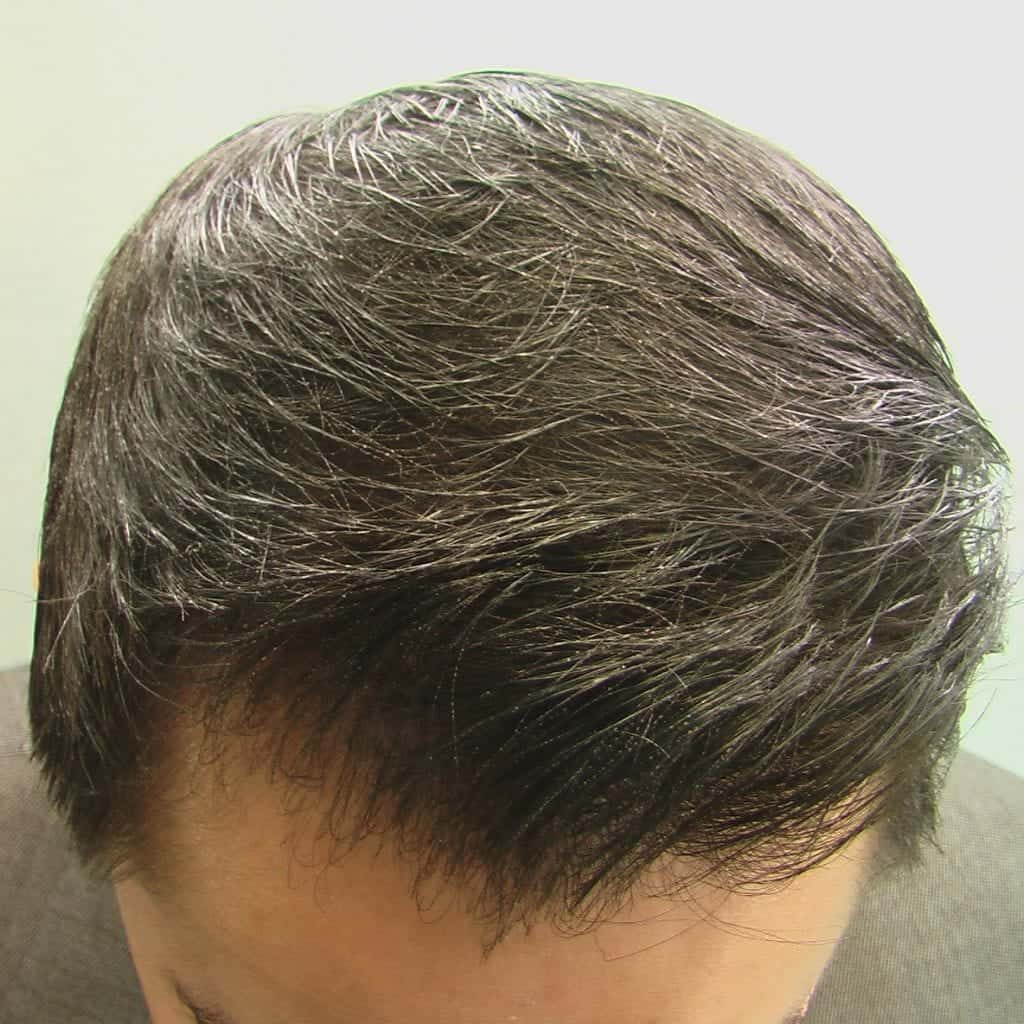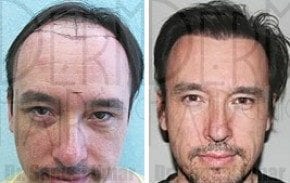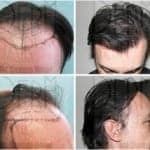Article Updated August 2022 While hair loss is less common in Asian people, due to migrations and gene flow between different ethnic and racial groups, Asians are not exempt from alopecia. They can suffer from hair loss, and in severe cases, baldness. It’s important to recognize when there is a problem and address it properly before the condition worsens.
The observation of a significant reduction in baldness incidents in isolated cohorts of people of Asian genetic lineage ( East Asian, Eurasian Steppes, Native Americans, and Native South Americans) does suggest that baldness is a relatively more recent evolutionary trend in Asian people. Regardless of one’s conclusions, however, baldness in the Asian population is a very common reality that should not come as a surprise given thousands of years of active coexistence and genetic mixing with other ethnic groups. It is thus a misconception that Asians are immune to baldness. Recent studies also report a large increase in the rate of baldness in Asian populations worldwide. The increase in hair loss among Asians continues to affect more and more people – both men and women. Fortunately, Asian FUE hair transplant using the Dr.UGraft method now offers a new armament to combat this rising problem. Dr.UGraft technique has overcome many of the challenges posed to conventional hair transplants in Asian patients.



Asian Hair Restoration Challenges
Hair types vary based on ethnicity and culture. Certain specific Asian hair traits can affect the outcome of a hair transplant:
- Asian hairs typically possess thicker caliber hair shafts with less hair per centimeter. Thicker hair caliber creates the illusion of dense hair, however, there are fewer follicles to work with.
- Asians have relatively less hair density. This lessened hair count per area translates into a lesser number of donor hair available. Thus after FUE the head donor area can appear thinned out.
- Asians typically have thick hair follicles, so basic FUE and strip surgery tend to result in harsh and artificial looking hairlines. This is due to the said methods relying solely on head hair donor supply. Using hair follicles from non-head areas would solve the issue.
- People of Asian descent tend to scar or keloid quite easily. FUE takes a scalpel-free approach to hair transplants procedudres, thus minimizing the risk of scarring.
Asian Hair Loss Solutions
Some academics theorize that a more westernized diet and changes in socio-economic environments might contribute to the recent increase in Asian hair loss. To overcome hair loss, various cultures have utilized various remedies. Historically, Asian cultures typically used herbal solutions to combat pattern baldness, such as ginseng. Ginseng promotes hair growth by helping delay natural hair cell death and stimulating the scalp. Asian cultures have also relied on Polygonum Multiflora (also known as Foti) as a remedy. This old Chinese hair loss remedy has been in practice by the Chinese for centuries. However, modern medicine questions its efficiancy. Anthropologists have also linked green tea as a possible preventative measure against baldness within Asian cultures. Research has shown that EGCG, a chemical component of green tea can inhibit the effects of DHT- the major culprit in the causation of baldness. Using these methods are great practices, but don’t make someone immune to hair loss.
Use Of Prosthetic Implants in Asian Hair Restoration
Additionally, some self-conscious Asian individuals have also resorted to extraordinary measures to combat it. For example, one hair replacement method – still illegal and prohibited in the United States, as well as most of the developed western world – is the use of prosthetic implants. Though hair restoration using prosthetic implants remains banned in most of the world, Japan still practices the method. Of those implant methods, NIDO has become the most notorious. In the United States, Under Section 895.101 of Code 21 of the Federal Regulations of the FDA, the FDA prohibits the use of prosthetic hair implants as of 1979 with reiterations in 2016. Dr. Umar has also seen many cases of complications in prosthetic implants. These include formations of abscesses, severe infection, scarring, and other disfigurements in patients. In fact, on many occasions, he has surgically extracted prosthetic hairs at great pain and cost to the patients.
However, safer hair transplant solutions exist for Asian patients. Asian advanced FUE transplant using Dr.UGraft procedure also offers a safe and effective solution for Asian individuals suffering from hair loss. Continue reading to learn more about it.
Asian FUE Hair Transplant Using Dr.UGraft: The Dr.UGraft Advantage
Dr.UGraft offers an ideal solution for Asian patients for three key reasons:
- Thick, straight hair are ideal for Dr. UGraft’s knife-free and linear scar-free hair transplantation. This leads to higher graft survival rates during surgery.
- Unlike ordinary FUE, Dr.UGraft method allows for the efficient extraction and transplantation of hair follicles from the nape, beard, and body. This helps prevent overharvesting the already-thin head donor areas of Asian patients. Beard and body hair can augment the donor pool to provide thicker and better coverage without thinning out traditional head donors.
- The ability to utilize finer hairs from the nape, around the ear areas, and elsewhere on the body allows for softer hairlines and temple points in Asian patients. This overcomes the problem of harsh hairlines and temples. Most hair transplant practitioners using traditional methods or traditional donor areas in the middle of the back of the head face the issue and don’t have a way around it.
Examples of Asian FUE Hair Transplant & Asian Hairline Treatment – Patient Results
Case 1: Asian FUE Hair Restoration Using Dr.UGraft Method for Asian Hairline refinement and adding density

Watch full Patient Result Video:
Case 2: Asian Follicular Unit Extraction Using Dr.UGraft for Asian Hairline refinement and covering level 4 hair loss


Watch full Patient Result Video:
Men and women of Asian descent seeking ultimate hair restoration with flawless hairlines and impeccable finishing should look to have Asian FUE hair transplant using Dr.UGraft procedure.
Asian FUE Hair Transplant – Frequently Asked Questions:
I have had unsatisfying transplantation results for my Asian hairline, it looks too coarse and fake. Can this be fixed using Dr.UGraft FUE?
Yes. Dr. UGraft’s procedure uses hair from the nape area and all over the body. He’d be able to use the finest hair to soften hairlines in patients presenting with unsatisfactory transplanted hairlines. Usually, the issue is the hairline is too coarse or pluggy. This is a very common problem with patients of east Asian descent whose hair calibers are naturally very thick. Using finer hairs from the nape or body helps to prevent or fix this issue.
I’m extremely prone to scarring and have sensitive skin. Can I still seek treatment with Dr.UGraft FUE?
Of course! Dr. Umar knows that people of Asian ethnicity often have trouble with scarring, especially with keloid scars. For that reason, he developed Dr.UGraft FUE to perform a hair transplant with minimal chance of scarring. The tiny incisions of Dr.UPunch tool allow for a hair transplant procedure without extensive scarring or lasting damage to the skin. Wounds from the procedure often heal within a week or even less.
How much does Asian roots hair transplant cost?
Cost depends on the number of grafts needed to restore hair. The number of grafts the patient wants will depend on the severity of their hair loss and the desired final look. Therefore, the cost of Asian hair treatment varies from patient to patient. Anyone interested in hair restoration using Dr.UGraft can consult with Dr. Umar for free to develop a treatment plan and get a cost estimate.
If your questions about FUE hair restoration for Asian hair weren’t answered in the section above, feel free to use the following button to send them to Dr. U:
Further Reading
- Hair Loss and Ethnicity
- Publication of the use of thin nape hair and hairs from around the ears in creating softer natural looking hairlines
References
- CFR – Code of Federal Regulations Title 21. Accessdata.fda.gov. https://www.accessdata.fda.gov/scripts/cdrh/cfdocs/cfcfr/CFRSearch.cfm. Published 2022. Accessed August 10, 2022.
- Race, Ethnicity and Hair Loss – Why Eskimos Don’t Go Bald. Hair Growth SOS. https://www.hairgrowthsos.com/ethnicity-and-hair-loss.html. Published 2022. Accessed August 10, 2022.

